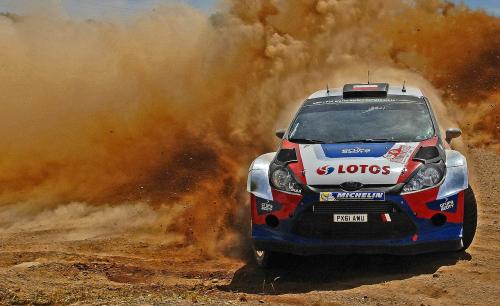How to Build a Rally Car

There’s no doubt that
the years have been filled with some fantastic rally drivers. We’ve delighted
in the displays by such legends as Tommi Makinen, Colin McRae, and Walter Rohrl
during the World Rally Championships and their individual careers. More often
than not though, we’re just spectators to this skill, sitting comfortably on
our sofas while these talented drivers careen around the apex of corners,
barely on two wheels.
This level of
breath-taking excitement can be enough to make us think about writing our
letters of resignation, quitting the day job, and embarking on a thrill-seeking
life around the rally car circuit. With events the world over and no need for a
heavily sponsored teams or a rally licence, there’s certainly the opportunity
to try!
With a few
modifications and a little self-confidence, you can live the dream with your
own automobile.
There are a variety of
events throughout the world however, that don’t require a heavily sponsored
team, or even a rally license. All you need to do is make a number of
modifications to your car and build up a bit of self-confidence.
Keeping you safe
It goes without saying
that you don’t want to crash. But when we’re doing dangerously competitive
speeds, crashing is somewhat inevitable. Therefore, taking numerous
measurements to safe proof the car you are going to be driving is the most
important process when constructing a rally car. The installation of a roll
cage not only reduces the risk the driver and co-driver are at, but it also
strengthens the car as a whole. Understandably, cars are built for use on roads
and designed in a way to match a particular style of moderate driving. When you
take your car rallying however, you are placing it under significant stress. A
properly installed roll-cage carries as much worth as a building’s foundations.
It’s not an easy task
though. In order to install a roll-cage however, the entire car must be
stripped, right back to the bare shell of the body. All the body sound proofing
material off the floor must be pulled out, before welding any seam in the
vehicle. Once this had been done, the roll-cage is good to be installed.
Adding a drivetrain
The next thing to
consider is a drivetrain. This is the component of the car which delivers power
between the engine and the wheels, the drivetrain requires significant
alterations if it is going to produce the necessary power capable of competing
in an off-road rally. Most modern cars are controlled by an internal computer
or membrane, which receives instruction from a chip. As standard roadworthy
vehicles are configured to be fuel efficient and produce minimal emissions,
much off the potential performance is restricted. With a performance chip, or
tuner as it is alternatively known, vehicles can create an additional output of
100 horsepower in some instances.
It’s worth knowing how
this works. Effectively, the replacement chip removes the restriction that has
been implanted. In doing so, the instruction which tells the engine how much
fuel should be released when the driver places his foot flat down on the
accelerator no longer exists. With this comes maximum acceleration and
similarly maximum throttle response, yet at the cost of fuel economy. You
should also consider changing your intake manifold to one that produces low end
torque. You could also replace the exhaust manifold with a header, which will
enhance horsepower and the throttle response.
Time for tyres
Standard tyres aren’t
going to cut it on a rally circuit. Due to the copious number of pot holes,
selection of sharp rocks and stones, and uncountable collisions with curbs, it
is no surprise that the tyres on a rally car need to be made of sturdier stuff.
In a bid to avoid continuous punctures, manufacturers of rally tyres build them
all with a thick sidewall. Some even contain added ribs on the exterior of the
sidewall. They will all contain larger, thicker tread blocks, offering more
grip during acceleration, braking, and cornering. Depending on the road
surface, the temperature, and the length of the stage, you will also be
required to pick a particular compound of tyre, either soft, medium, or hard.
Skipan
Ever grounded your car
after a particularly big bump in the road? This is something which every driver
is more than likely to experience in their life, whether it was scraping the
sump off the ground after gaining unintentional air or going over too steep a
speed bump. Imagine when you’re in a rally car however, constantly hitting
jumps — the sump of the car along with the engine casing would be destroyed
within a matter of moments, causing catastrophic damage. That is why you must
fit an aluminium plate, which protects the underneath of the car.
If you’re taking a
turn into rally driving, keep these tips in mind to help you on the way. Plus,
you might want to expand your toolkit in your garage in order to keep up with
maintenance — a good inspection lighting option is the first component of a more
professional, rally-ready garage at home!
Post Your Ad Here
Comments